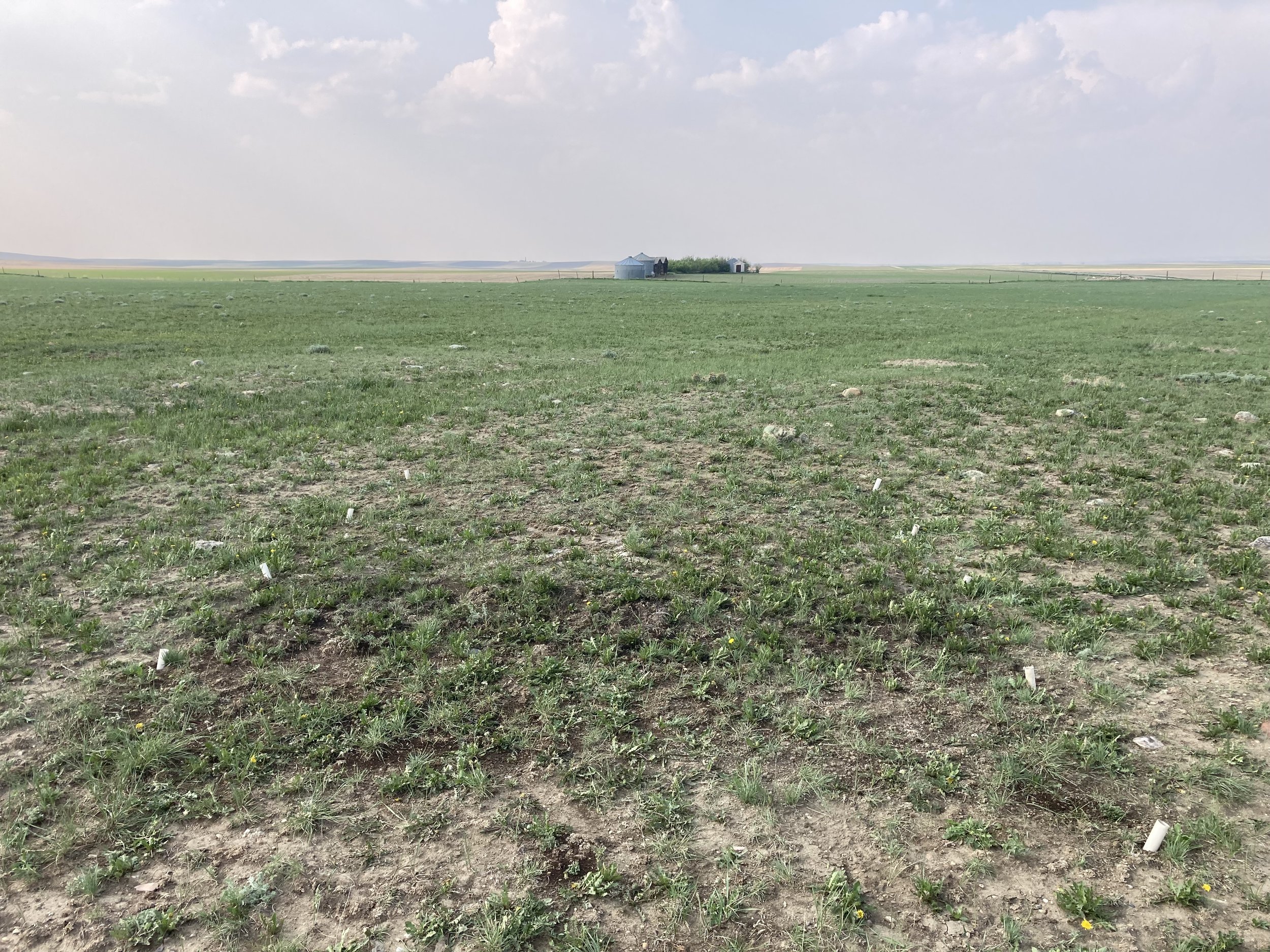Soil Experiment
Every once in a while, I geek out.
I get a question stuck in my mind.
Usually, it’s because a snippet of a conversation stays with me, causing me to wonder if someone else’s nugget of wisdom might apply to my situation.
Last weekend, after the sheep and cows were in the right pasture, I allowed myself to geek out and set up research plots to test soil amendments.
This personal research won’t make any money – in fact, it cost a little money.
It is unlikely to give me information that I can scale up to apply on my entire ranch.
No doubt, the neighbors think I’m wacked out.
But still, I want to know.
My question goes back to last summer when grasshoppers arrived en masse and decimated my pastures.
As most of my grass disappeared before my eyes, I noticed that a few patches of grass grew tall and went to seed, with nary a single grasshopper ambush.
These areas were often on dry hilltops, completely surrounded by consumed grass.
I had heard in a conversation that grasshoppers are attracted to pheromones given off by stressed grass.
If I were to take a wild guess, I would say no measurable moisture whatsoever last year caused stress to my grass.
The grass that stood tall among the desecration grew from under hay that I had fed a few years before. The hay held a bit more moisture and kept the grass a bit cooler.
Old hay does wonders for my grass, but I questioned whether my soil was missing anything else.
I tested for micronutrients on my range and alfalfa field.
Sure enough, my soil is like most soil in Montana, low in boron and calcium.
As soon as I received the test results, I knew I would lay out plots to see if I could detect a difference after I added either boron or calcium.
But another question tickled my mind, too.
I wondered if the boron and calcium were already in the soil, but not available to the plants.
I decided to test vermicast and humate, both one-time additives that are supposed to help microbes bring minerals to plants.
So far, I had four plots plus a control plot for three areas on my ranch.
I thought about adding a few more additives, but this experiment was growing ridiculous.
I loaded stakes, a tape measure, hammer, backpack sprayer and the additives into the back of my truck.
Then I headed to the grocery store for my calcium source: milk.
Other shoppers would call me nuts if they knew I planned to pour dairy products on the ground. My entire social life revolves around the local IGA so I wanted to avoid that label if possible.
Incognito, I grabbed two gallons.
I felt like Agent Max Smart, a little goofy, a little incompetent and a little maybe-this-will-actually-work.
As I pounded the stakes into the ground, I looked west at the vast prairie and the endless mountains beyond.
My little test plots seemed puny, insignificant and silly.
But I had all of the stuff with me so I kept going.
I’m sure I spread way too much on each plot.
I spread everything by hand.
To say the additives were applied unevenly would be an understatement, but I was getting hungry.
I don’t expect results for at least three years, but I’ll be watching.
If I ever see a tiny patch of tall grass or grasshoppers ignoring a small rectangle on the prairie, I’ll know my experiment worked.
If I don’t notice a difference, I’ll still have an answer.
Meanwhile, I’ll embrace my geekiness, appreciating knowledge for knowledge’s sake.
After all, information is power.
Even when it comes from milk.
